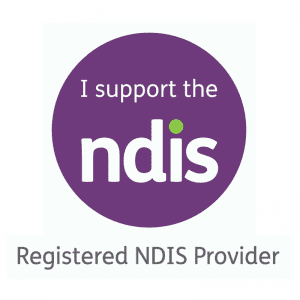 What is Meditation?
What is Meditation?
Meditation has been practiced for thousands of years, originally it was meant to help deepen understanding of the sacred and mystical forces of life. These days, meditation is commonly used for relaxation and stress reduction. During meditation, you focus your attention and eliminate the stream of jumbled thoughts that may be crowding your mind and causing stress.
Meditation can give you a sense of calm, peace and balance that can benefit both your emotional well-being and your overall health. Meditation can help you continue more calmly through your day, clear away the information overload that builds up every day and contributes to stress.
Spending even a few minutes in meditation can help restore your calm and inner peace to make you more effective, reduce stress and increase well-being. Anyone can practice meditation. It’s simple, free and requires no special equipment. You can practice meditation anywhere – out for a walk, riding the bus, in a waiting room.
Benefits of meditation
The emotional benefits of meditation can include:
- Gaining a new perspective on stressful situations
- Building skills to manage your stress

- Increasing self-awareness
- Focusing on the present
- Reducing negative emotions
- Increasing imagination and creativity
- Increasing patience and tolerance
Types of Meditation
Meditation is an umbrella term for the many ways to a relaxed state of being. There are many types of meditation and relaxation techniques that have meditation components, including
- Mindfulness meditation – be present and focus on right now, breath, sound, sights etc.
- Mantra meditation – repeating a calming mantra or word to prevent distracting thoughts
- Qi gong and Tai chi – ancient Chinese medicine and martial arts, physical movement and breathing
- Yoga – perform postures and breathing to focus attention, increase flexibility and strength
 Mindful Breathing
Mindful Breathing
This can be done anywhere at any time. All you have to do is be still and focus on your breath for one minute. Start by breathing in and out slowly. One cycle should last for approximately 6 seconds. Breathe in through your nose and out through your mouth, letting your breath flow effortlessly in and out of your body. Let go of your thoughts for a minute. Let go of things you have to do later and tasks that need your attention. Simply let yourself be still for one minute.
Purposefully watch your breath, focusing your senses on its pathway as it enters your body and fills you with life, and then feel it work its way up and out of your mouth as its energy dissipates into the world. Start with one minute and work your way up to several
Mindful appreciation
Notice 5 things in your day that usually go unappreciated. These things can be objects or people – it’s up to you. The point of this exercise is to simply give thanks and appreciate the seemingly  insignificant things in life; the things that support our existence but rarely get a second thought amidst our desire for bigger and better things.
insignificant things in life; the things that support our existence but rarely get a second thought amidst our desire for bigger and better things.
For example: harvested coffee beans allow you to have your morning cuppa, the internet means you can check the weather and traffic before you head to work, your clothing keeps you warm on your way.
- Do you know how these things/processes came to exist, or how they really work?
- Have you ever properly acknowledged how these things benefit your life and the lives of others?
- Have you ever thought about what life might be like without these things?
Mindful observation
 This is designed to connect us with the beauty of the natural environment, something that is easily missed when we are rushing around every day. Choose a natural object from within your immediate environment and focus on watching it for a minute or two. This could be a flower, insect, a plant, a tree, the clouds or the moon.
This is designed to connect us with the beauty of the natural environment, something that is easily missed when we are rushing around every day. Choose a natural object from within your immediate environment and focus on watching it for a minute or two. This could be a flower, insect, a plant, a tree, the clouds or the moon.
Don’t do anything except notice the thing you are looking at. Simply relax into a harmony for as long as your concentration allows. Look at it as if you are seeing it for the first time. Visually explore every aspect of its formation. Allow yourself to connect with its energy and its role and purpose in the natural world.
Positive mantras/ affirmations
We can have a tendency to use negative self-talk and this can create a negative cycle, if you think you can’t, and say you can’t – chances are – you can’t. You wire your brain for negativity and failure. We have to be very careful with our words, making sure we choose ones that help us improve and be positive. Positive mantras help us believe in the potential of an action we want to achieve. When we verbally affirm our dreams and ambitions, we start to turn our wishful thoughts into more tangible, real things – that then become achievable.
Benefits of mantras
Mantras or affirmations are proven methods of self-improvement because of their ability to rewire our brains. Similar to exercise, they raise the level of feel-good hormones and help our brains to form new pathways of “positive thought” – the more we think positive the more the pathways are strengthened and they become the path of least resistance, and the path we will instinctively follow. Try one of the following mantras or write your own. Make it as specific as you like. Repeat it out loud, several times every day to help get the positive pathways connecting.
- I appreciate and love my body
- My possibilities are endless
- I am happy and healthy
- I am strong and full of energy




